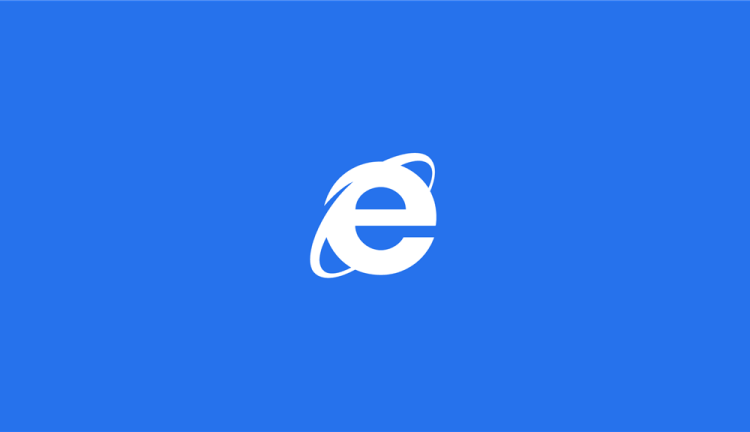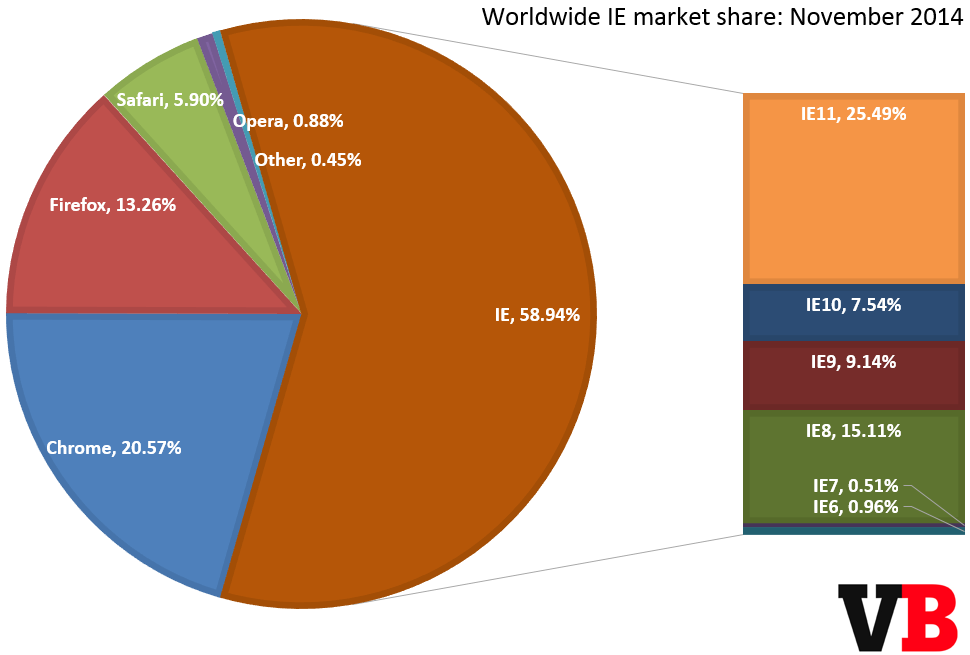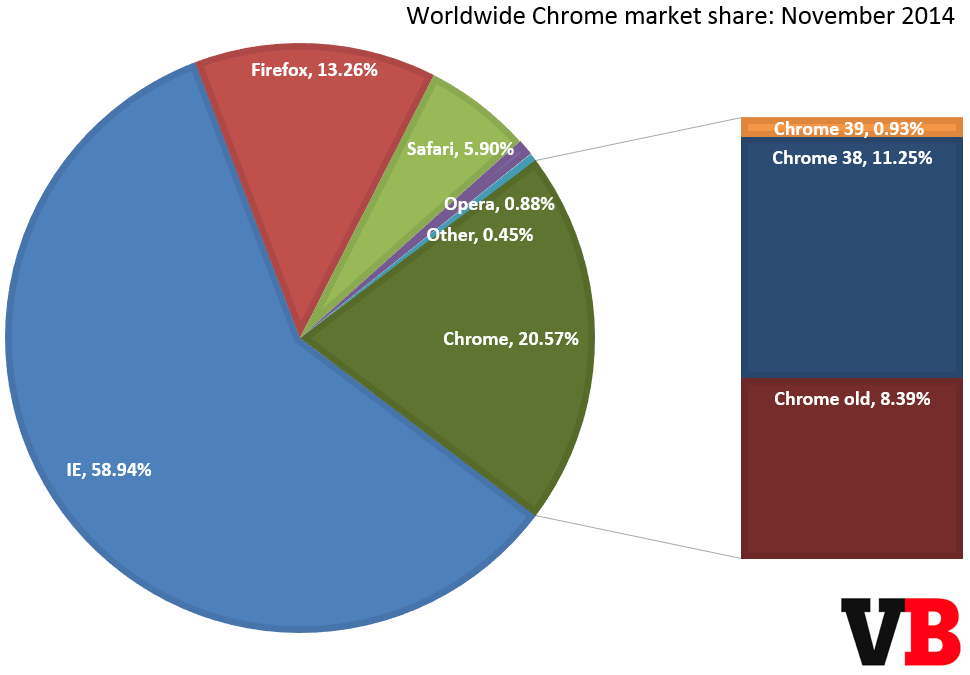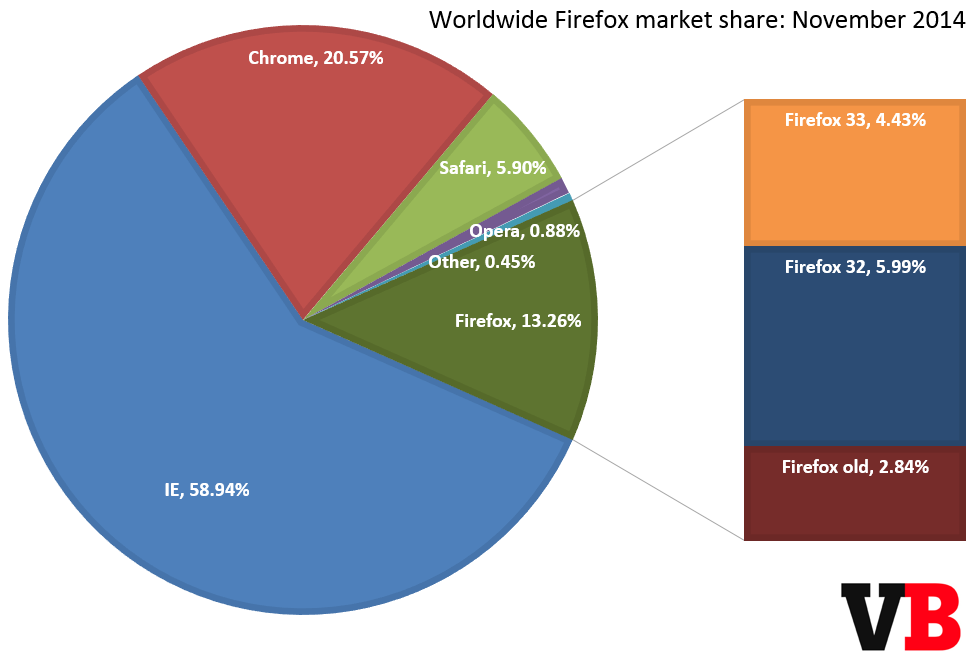November 2014 was a big month for the Web. We saw the release of Chrome 39, the debut of Firefox Developer Edition, and now we’re learning the latest version of Internet Explorer is used by one in four Internet users. Furthermore, the most hated browser version on the planet, IE6, has finally fallen below the 1 percent market share mark.
Between October and November, here is how the browser market changed, according to the latest figures from Net Applications:
- Internet Explorer: Up 0.45 points to 58.94 percent
- Chrome: Down 0.68 points to 20.57 percent
- Firefox: Down 0.65 points to 13.26 percent
- Safari: Up 0.80 points to 5.90
- Opera: Up 0.05 points to 0.88 percent
Breaking the IE figure down further shows a lot of good news for Microsoft’s browser: The three newer versions grew while the three older versions fell. IE11 gained 1.44 percentage points to hit 25.49 percent. IE10 gained 1.45 points to 7.54 percent, and IE9 gained 0.46 points to 9.14 percent. Most importantly, IE8 fell 2.20 points to 15.11 percent.
In October, IE11 managed to pass IE8 to become the world’s most popular browser, and now the gap is widening. This new trend became possible because Windows XP, whose users can’t upgrade past IE8, has started to lose significant share. As a result, IE11 is no longer stealing market share just from IE10 and IE9, and those browser versions have managed to recover as well.
The good news doesn’t end there. Among the really old versions, IE7 dipped 0.01 points to 0.51 percent and IE6 fell 0.72 points to 0.96 percent.
Web developers will be happy to learn that not only does the latest version of IE11 now finally have the largest userbase, but IE6 has fallen below the 1 percent mark. Microsoft has an IE6countdown website just for the purpose of tracking which countries are still above this threshold (China is the biggest offender).
Google’s Chrome didn’t see any gains this month, and this is the first time we’re noticing that its built-in upgrade system hasn’t brought in quite the market share gains it usually does. Chrome 39 only managed to capture 0.39 percent market share, though it was released in the second half of the month.
Meanwhile, Chrome 38 gained 4.50 points to 11.25 percent. Chrome 37 lost 4.38 points to 1.92 percent. Both of these will soon plummet as Chrome 39 takes over, as is typical with Google’s numbers.
As we’ve noted before, Mozilla’s Firefox is having a very bad year, and it keeps getting worse. Last month, the browser fell to the 13 percent mark, and we said at the time that “we can’t tell you exactly how long it’s been because Net Applications’ data only goes back as far as November 2007, when Firefox still had over 15 percent market share.”
The only good news is that Firefox’s built-in upgrade system continues to work well. Firefox 33 grabbed 2.24 points to hit 4.43 percent. All previous Firefox versions fell.
Net Applications uses data captured from 160 million unique visitors each month by monitoring some 40,000 websites for its clients. This means it measures user market share.
If you prefer usage market share, you’ll want to get your data from StatCounter, which looks at 15 billion page views. The operating system figures for November are available here.
VentureBeat's mission is to be a digital town square for technical decision-makers to gain knowledge about transformative enterprise technology and transact. Learn More




